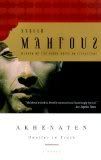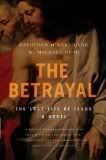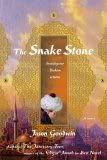 |
|
(Abraham by József Molnár)
|
Read Part 1
3. Monotheism did not happen instantly. (contd.)
Still the Israelites practiced polytheism,worshiping not just Yahweh, but also the fertility goddess Asherah and the Canaanite God Baal, though they were not supposed to. Whenever a major calamity fell on the Israelites, like the Assyrian invasion in 722 B.C.E and the Babylonian invasion followed by the destruction of the First Temple in 586 B.C.E it was blamed on polytheism.
Israelites were reminded that they had broke the covenant with God and hence were incurring his wrath. Still this was not taken seriously till the time the Babylonians exiled the Caananites. It was during this exile that one of the scribes of that era, known as “P”, took all the previous revisions and created the present version of the Bible. The documentary suggests that the Abraham story was created then, by this scribe, to enforce the concept of the covenant. The scribe lived in Babylon and Abraham was placed in the nearby Ur; Abraham’s goal was to reach the promised land, so was the dream of the exiles.
It was also during the exile that the observances like sabbath were emphasized. Israelites learned to pray in groups and to worship without a temple, king or priests. This was the formation of modern Judaism.
4. Archaeology disproves other events as well
Following the Exodus, as per the Bible, Joshua takes the Israelites into Canaan through a military conquest. Archaeology has found evidence of destruction in various settlements which seem to agree with the Bible. But on dating the sites, it was found to happen much before Exodus and among the 31 sites listed by the Bible, just a few showed signs of war.
Similarly there is no evidence of the First Temple as well which made Ahmed Qurei, the Palestinian Authority official leading all peace talks with Israel to provocatively say that it was a Jewish invention. The problem is that the First temple lies below the third holiest site in Islam which makes archaeology impossible. The Bible has a detailed description of the temple and in fact there is a temple which matches this description at Ain Dara, in modern-day Syria.
Sometimes there is a kernel of truth in myths. But as we go back in time it becomes difficult to find even this kernel. The documentary says that, “Genesis is, for the most part, a compilation of myths, creation stories, things like that, and to find a historical core there is very difficult.”
5. Archaeology vs Scripture
While the documentary suggests that the concept of one God was evolved during the Babylonian exile, in fact for a brief period in Egypt, the Pharaoh Akhenaten had this concept of One God and he ruled before the time frame suggested for the Exodus? Is it possible that the small number of people who fled Egypt carried with them the seeds of this story? This possibility was not raised in the documentary.
While archaeology disproved many Biblical narratives, there are a few places where the text agrees, like in the case of the House of David. There was scepticism about King David, but on a victory stele dedicated by the king of Damascus, the words, “I slew mighty kings who harnessed thousands of chariots and thousands of horsemen. I killed the king of the House of David.” were found which makes David, the earliest Biblical figure to be confirmed by archaeology. He lived around 1000 B.C.E, as a petty warlord of a small chiefdom with few settlements.
Archaeology also shuts up the sceptics who claim that the entire Bible was an invention. A silver scroll with a Priestly Benediction earlier then the Dead Sea Scrolls by 400 years have been found. And those scrolls contain the word – Yahweh.
While this program enraged certain believers – for using government funding to prove there was no God – there is consensus, with some quibbles, that this program was a fairly accurate summary of a century of Biblical Studies.
Finally
Was the Bible, a book of faith, meant to be investigated like this as a historical document? According to William Dever, Professor Emeritus of the University of Arizona
We want to make the Bible history. Many people think it has to be history or nothing. But there is no word for history in the Hebrew Bible. In other words, what did the biblical writers think they were doing? Writing objective history? No. That’s a modern discipline. They were telling stories. They wanted you to know what these purported events mean.
And Carol Meyers, an archaeologist and professor of religion at Duke University
Too often in modern western thinking we see things in terms of black and white, history or fiction, with nothing in between. But there are
other ways of understanding how people have recorded events of their past. There’s something called mnemohistory, or memory history, that I find particularly useful in thinking about biblical materials. It’s not like the history that individuals may have of their own families, which tends to survive only a generation or two. Rather, it’s a kind of collective cultural memory.
Postscript: The website for this program is a treasure trove of information. The entire documentary as well as the transcript is available online. Besides this there are interviews with the scholars who talk about the writers of the Bible, foundation of Judaism, Archeology of the Hebrew Bible, Moses and the Exodus, The Palace of David and the Origins of the Written Bible. There is also an interactive timeline and a whole bunch of video extras.
Update (Dec 9): DIY Scholar has a list of online resources which will enhance the understanding of this period.




